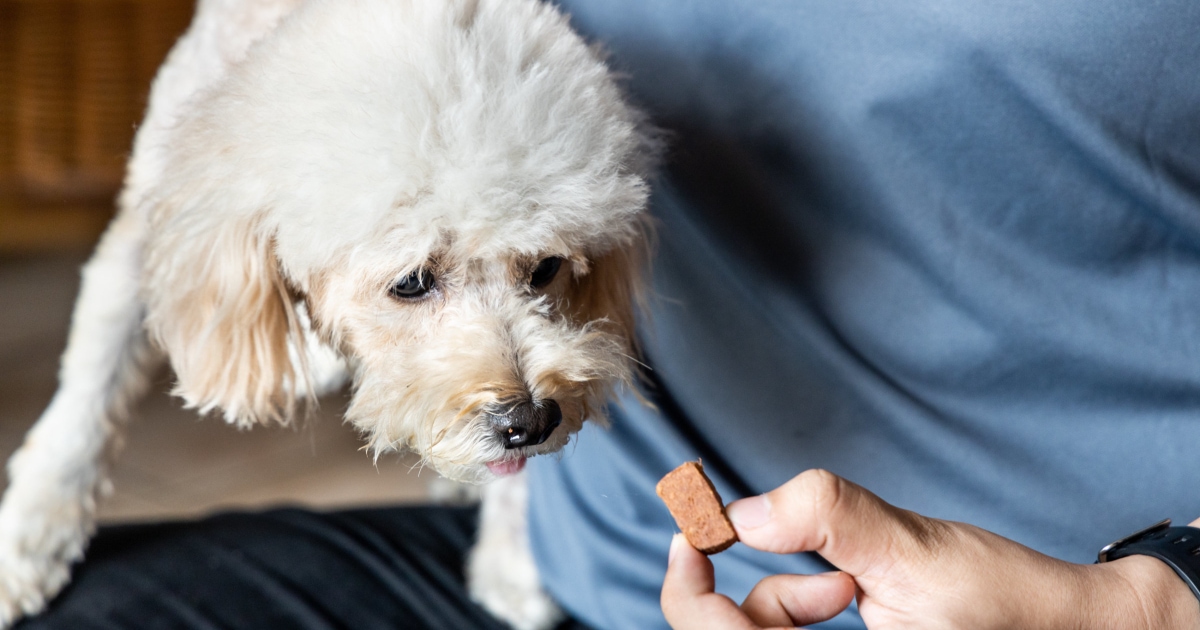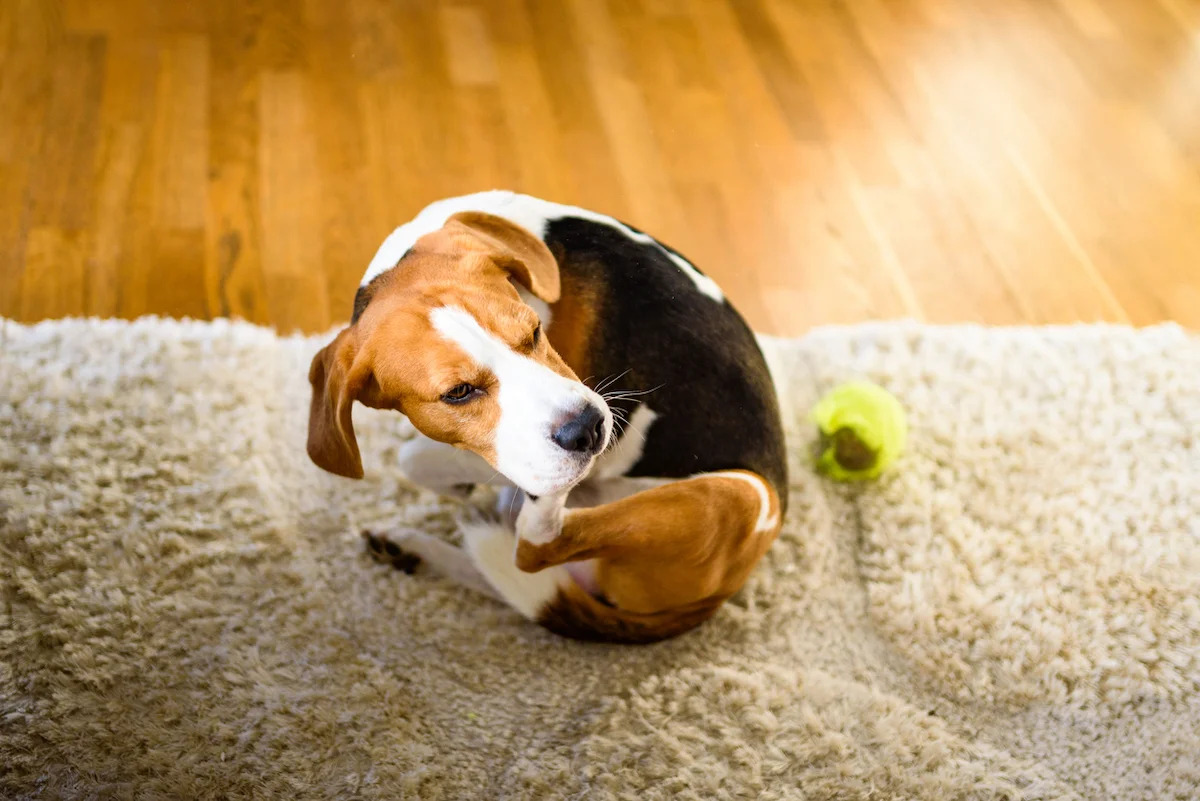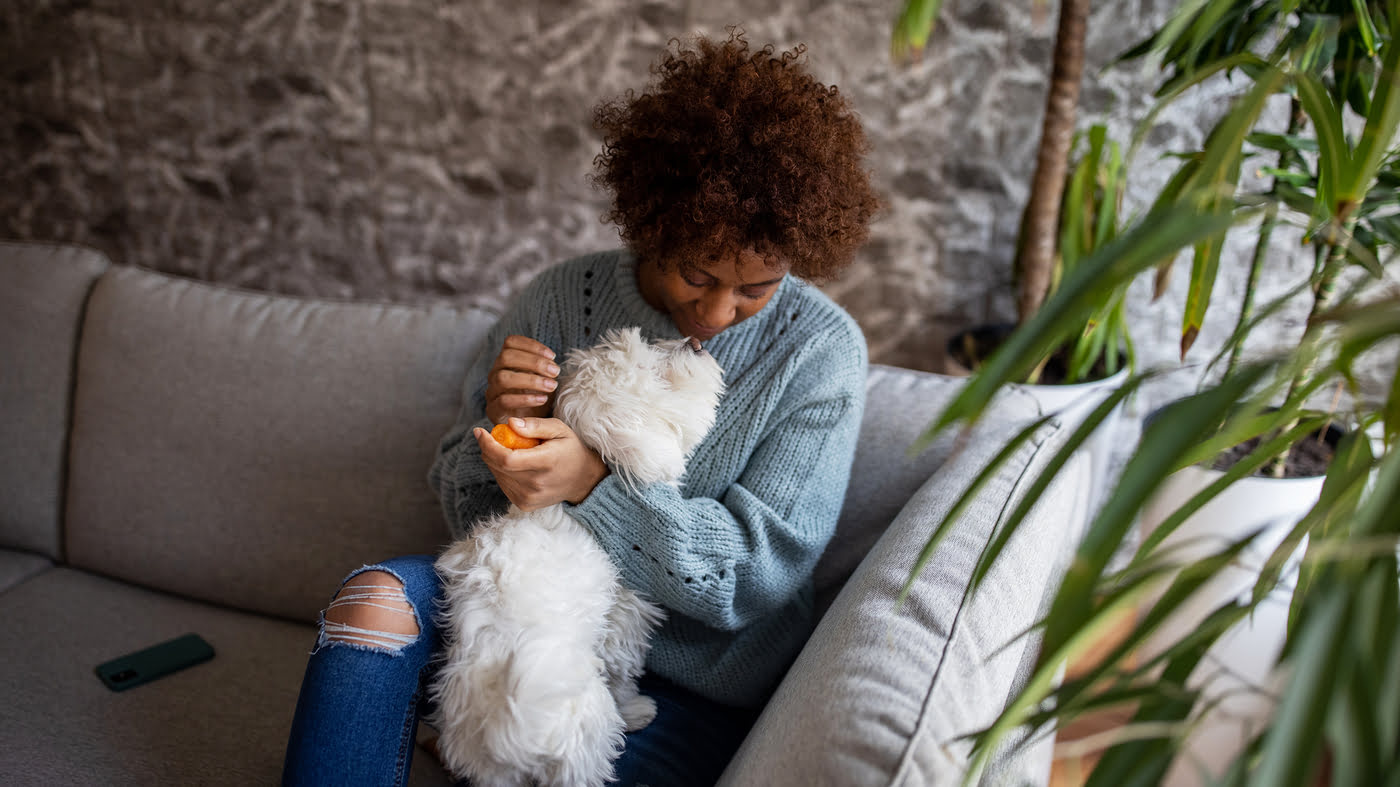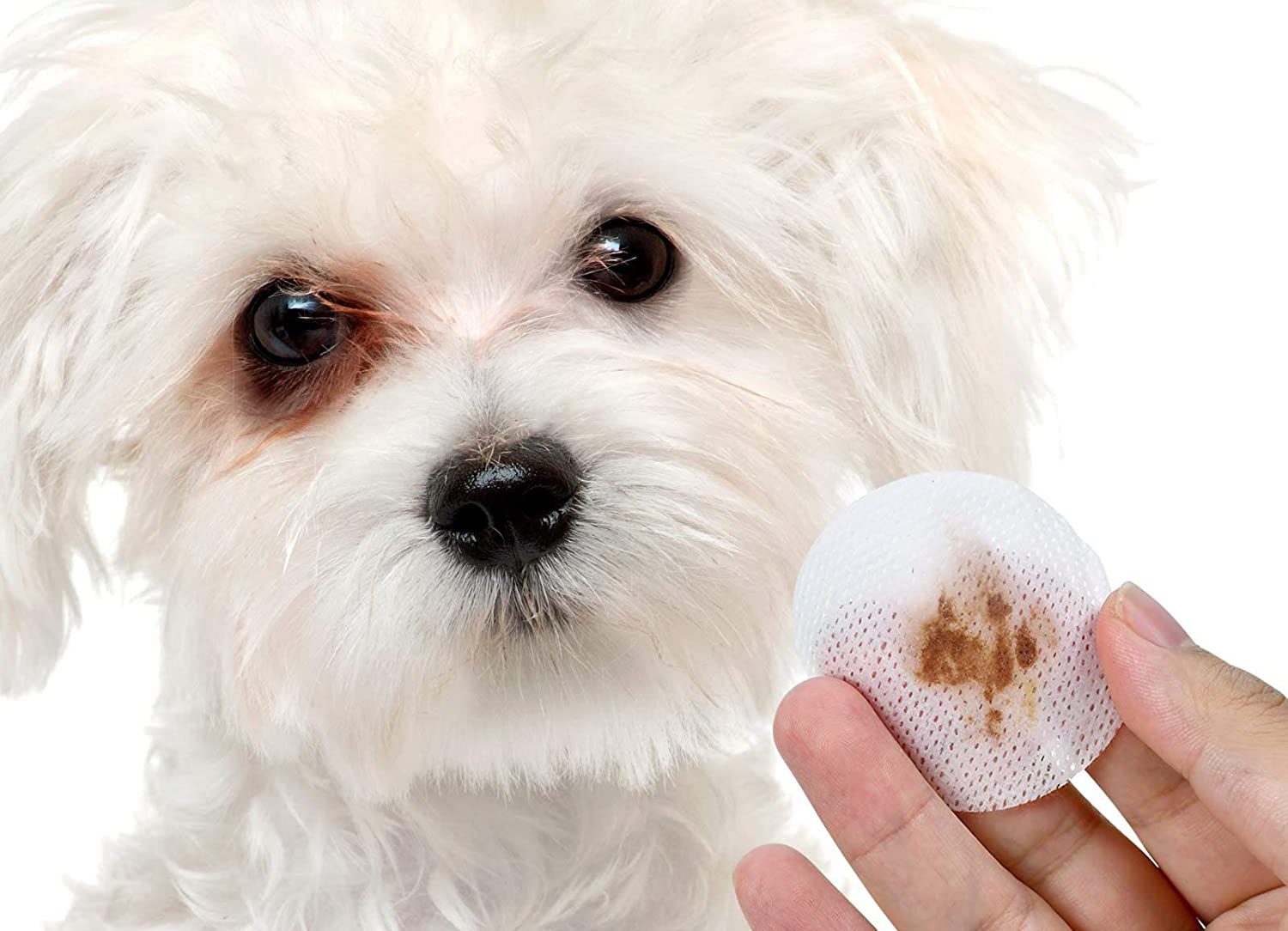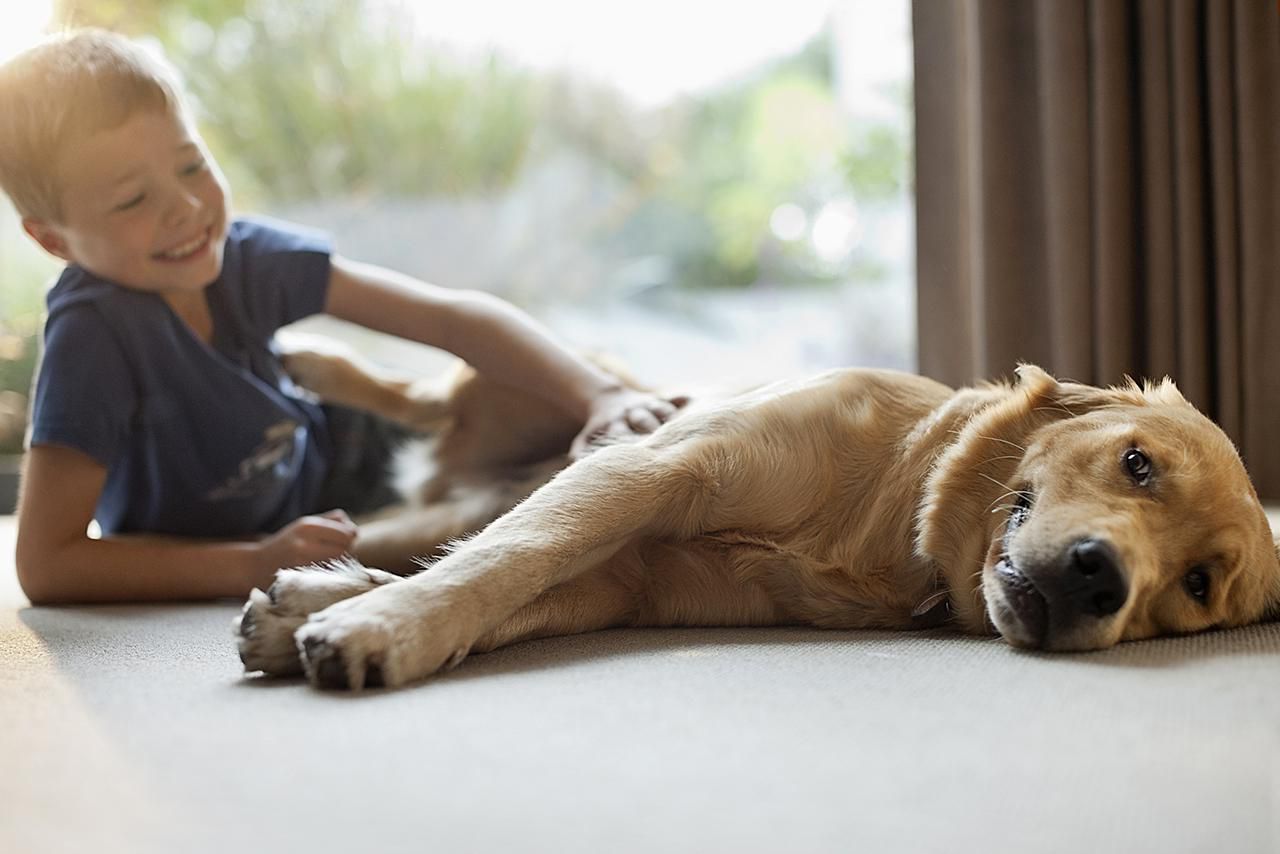Home>Health & Wellness>Common Health Issues>How Do I Get Rid Of The Fleas On My Dog


Common Health Issues
How Do I Get Rid Of The Fleas On My Dog
Modified: February 21, 2024
Learn effective ways to eliminate fleas on your dog and prevent common health issues. Get expert tips and advice for a healthy, happy pet.
(Many of the links in this article redirect to a specific reviewed product. Your purchase of these products through affiliate links helps to generate commission for Pawsomeoldies.com, at no extra cost. Learn more)
Table of Contents
Introduction
Dealing with a flea infestation on your beloved canine companion can be a frustrating and distressing experience. These tiny, blood-sucking pests not only cause discomfort for your dog but can also infest your home, making life uncomfortable for both you and your furry friend. Fortunately, with the right knowledge and proactive measures, you can effectively tackle this common health issue and restore peace and comfort to your home.
Fleas are a persistent nuisance that can affect dogs of all breeds and sizes. These parasitic insects thrive in warm and humid environments, making them a prevalent problem in many regions. While they are most active during the warmer months, fleas can be a year-round concern in some areas. Understanding the behavior and life cycle of fleas is crucial in effectively combating and preventing infestations.
In this comprehensive guide, we will delve into the various aspects of dealing with fleas on your dog and in your home. From identifying the presence of fleas on your dog to implementing effective treatment and prevention strategies, we will cover everything you need to know to address this common health issue. By the end of this article, you will be equipped with the knowledge and tools to rid your dog and home of fleas and prevent future infestations.
So, if you've been wondering how to get rid of the fleas on your dog and keep them at bay, you've come to the right place. Let's embark on this journey to reclaiming a flea-free and comfortable environment for both you and your canine companion.
Read more: How To Get Rid Of Fleas And Ticks On My Dog
Understanding the Flea Problem
Fleas are small, wingless insects that survive by feeding on the blood of mammals, including dogs. These pesky parasites not only cause discomfort and irritation to your furry friend but can also pose health risks and lead to secondary skin infections. Understanding the flea problem involves gaining insight into the behavior, life cycle, and potential consequences of infestations.
Behavior and Life Cycle of Fleas
Fleas exhibit a remarkable ability to reproduce rapidly, making them a formidable adversary in the battle against infestations. A single adult female flea can lay up to 50 eggs per day, allowing populations to escalate exponentially within a short period. These eggs are not confined to your pet's fur; they can be scattered throughout your home, including carpets, bedding, and furniture.
Once the eggs hatch, they give rise to larvae that thrive in dark, humid environments, such as the nooks and crannies of your living space. After undergoing several molting stages, the larvae spin cocoons and transform into pupae. These resilient cocoons can remain dormant for extended periods, making them resistant to conventional treatment methods.
When conditions are favorable, such as the presence of a potential host, the pupae emerge as adult fleas ready to feed and reproduce, perpetuating the cycle of infestation. Understanding this life cycle is crucial in comprehending the persistence of flea problems and the necessity of thorough and sustained eradication efforts.
Health Risks and Consequences
In addition to causing incessant itching and discomfort for your dog, flea infestations can lead to more severe health issues. Some dogs may develop allergic reactions to flea saliva, resulting in dermatitis and skin inflammation. Furthermore, fleas can transmit diseases and parasites, including tapeworms, to your canine companion, posing additional health risks.
Beyond the implications for your dog's well-being, flea infestations can also impact the overall hygiene and comfort of your home. Persistent scratching and biting by infested dogs can lead to skin lesions and hair loss, while the presence of fleas in your living environment can cause distress for both you and your family members.
By understanding the behavior, life cycle, and potential consequences of flea infestations, you gain valuable insights into the urgency and thoroughness required in addressing this common health issue. Armed with this knowledge, you can proceed to identify and tackle fleas on your dog and in your home effectively.
Identifying Fleas on Your Dog
Identifying fleas on your dog is a crucial first step in addressing a potential infestation. These tiny parasites can be challenging to detect, especially in the early stages. However, by paying close attention to your dog's behavior and conducting thorough examinations, you can spot the telltale signs of flea presence.
Read more: How To Get Rid Of Fleas On My Cat And Dog
Signs of Flea Infestation
-
Excessive Scratching and Biting: If you notice your dog scratching or biting at their skin more frequently than usual, it could indicate the presence of fleas. Flea bites cause irritation, leading to persistent itching and discomfort for your dog.
-
Visible Fleas or Flea Dirt: Fleas are adept at hiding within your dog's fur, but with careful observation, you may spot these fast-moving insects. Additionally, flea dirt, which resembles dark specks or pepper flakes, may be visible on your dog's skin and coat. This is actually flea feces and is a strong indicator of infestation.
-
Skin Irritation and Redness: Flea bites can cause skin irritation, leading to redness and inflammation. Check for signs of dermatitis or allergic reactions, as these can be indicative of a flea problem.
-
Hair Loss and Hot Spots: Prolonged flea infestations can result in hair loss and the development of hot spots on your dog's skin. These areas may appear red, inflamed, and sensitive to the touch.
Conducting a Flea Check
To effectively identify fleas on your dog, follow these steps:
-
Thorough Coat Examination: Inspect your dog's fur, paying close attention to areas where fleas are likely to hide, such as the neck, tail base, and groin. Use a fine-toothed comb to comb through the fur, looking for fleas or flea dirt.
-
Skin Observation: Check your dog's skin for signs of redness, irritation, or small red bumps, which may indicate flea bites. Part the fur to get a clear view of the skin.
-
Flea Dirt Test: Place a few specks of suspected flea dirt on a damp paper towel. If the specks turn reddish-brown upon contact with water, it confirms the presence of flea dirt.
By diligently observing your dog and conducting regular flea checks, you can promptly identify and address flea infestations, preventing further discomfort and potential health risks for your furry companion.
Remember, early detection is key in effectively managing flea problems, so stay vigilant and proactive in monitoring your dog for signs of fleas.
Treating Your Dog for Fleas
Once you have confirmed the presence of fleas on your dog, prompt and effective treatment is essential to alleviate their discomfort and prevent the infestation from spreading. Several treatment options are available to eradicate fleas and provide relief for your canine companion.
1. Flea Shampoos and Baths
Giving your dog a thorough bath with a flea-specific shampoo is an effective way to eliminate adult fleas and soothe irritated skin. These shampoos contain active ingredients designed to kill fleas on contact, providing immediate relief for your dog. It's important to follow the instructions carefully and ensure thorough coverage of your dog's entire body during the bath.
Read more: How To Get Rid Of Fleas In A Dog Pen
2. Topical Flea Treatments
Topical flea treatments, commonly known as spot-on treatments, are applied directly to your dog's skin, usually between the shoulder blades. These treatments contain potent insecticides that target fleas at various life stages, including eggs and larvae. They provide long-lasting protection, typically remaining effective for a month or more.
3. Oral Flea Medications
Oral flea medications come in the form of chewable tablets or flavored treats that are administered to your dog. These medications work systemically, meaning they circulate in your dog's bloodstream and target fleas when they feed on your pet's blood. They are convenient and offer effective protection against fleas, often providing rapid results.
4. Flea Collars
Flea collars are another option for treating and preventing flea infestations in dogs. These collars contain active ingredients that repel and kill fleas, offering continuous protection for several months. When using flea collars, ensure a proper fit to allow for optimal contact with your dog's skin.
5. Environmental Control
In addition to treating your dog, it's crucial to address the flea infestation in your home environment. Regular vacuuming, washing bedding, and using household flea sprays can help eliminate fleas and prevent reinfestation. By targeting both your dog and your living space, you can effectively break the flea life cycle and minimize the risk of future infestations.
When treating your dog for fleas, it's important to consult with your veterinarian to determine the most suitable and safe treatment options based on your dog's health status and any potential sensitivities. Additionally, consistent and thorough application of the chosen treatment method is essential to achieve optimal results and ensure the well-being of your furry friend.
By taking proactive measures to treat your dog for fleas, you can alleviate their discomfort and create a healthier, more comfortable environment for both you and your beloved canine companion.
Read more: How To Get Rid Of Dog Fleas And Lice
Treating Your Home for Fleas
Addressing a flea infestation goes beyond treating your dog; it necessitates thorough measures to eliminate fleas from your living environment. By targeting the areas where fleas thrive and reproduce, you can effectively break the cycle of infestation and prevent reoccurrence.
Vacuuming and Cleaning
Regular and meticulous vacuuming of carpets, rugs, and upholstered furniture is a fundamental step in eradicating fleas from your home. Focus on areas where your dog spends time, as well as hidden spaces such as under furniture and along baseboards. After vacuuming, promptly dispose of the vacuum bag or clean the canister to prevent fleas from re-infesting your home.
Washing Bedding and Fabrics
Wash your dog's bedding, blankets, and any fabric items they frequently come into contact with in hot water. High temperatures effectively kill fleas at all life stages, including eggs and larvae. Additionally, consider washing your own bedding and any shared fabrics to eliminate any lingering fleas or eggs.
Household Flea Sprays
Utilize household flea sprays or foggers to treat your living space, targeting areas where fleas are likely to hide and lay eggs. Follow the instructions provided with the products and ensure thorough coverage of infested areas. Pay particular attention to dark and secluded spaces, as these are favored breeding grounds for fleas.
Outdoor Treatment
If your dog spends time outdoors in specific areas, consider treating those spaces for fleas as well. Fleas can thrive in outdoor environments, so addressing potential infestation sources in your yard or outdoor living areas is essential for comprehensive flea control.
Professional Pest Control Services
In severe infestation cases or persistent flea problems, seeking professional pest control services may be necessary. Pest control experts can assess the extent of the infestation and implement targeted treatment methods to eliminate fleas from your home effectively.
By implementing these home treatment measures in conjunction with treating your dog for fleas, you can create an environment that is inhospitable to these persistent pests. Consistency and thoroughness are key in ensuring the success of home flea treatment efforts and preventing future infestations.
Remember, a comprehensive approach that addresses both your pet and your living environment is crucial in effectively managing and eradicating flea infestations. With diligence and proactive measures, you can reclaim a flea-free and comfortable home for you and your furry companion.
Preventing Future Flea Infestations
Preventing future flea infestations is essential to safeguard the well-being of your dog and maintain a comfortable living environment for your family. By implementing proactive measures and incorporating preventive strategies into your routine, you can significantly reduce the risk of recurring flea problems.
Regular Preventive Treatments
Consistent use of veterinarian-recommended flea preventatives is crucial in safeguarding your dog against future infestations. Topical treatments, oral medications, and flea collars provide ongoing protection, effectively repelling and killing fleas before they can establish an infestation. By adhering to a regular preventive treatment schedule, you can create a protective barrier for your dog, minimizing the likelihood of flea-related discomfort and health risks.
Read more: How To Get Rid Of Fleas In Home And On Dog
Environmental Maintenance
Maintaining a clean and well-groomed living environment is key to preventing flea infestations. Regular vacuuming, particularly in areas frequented by your dog, helps remove flea eggs and larvae, reducing the chances of infestation. Additionally, washing your dog's bedding and cleaning pet-related fabrics on a routine basis can further deter fleas from taking hold in your home.
Outdoor Pest Control
If your dog spends time outdoors, especially in areas with grass and foliage, consider implementing outdoor pest control measures. This may include treating outdoor living spaces and potential flea habitats in your yard to minimize the risk of flea infestations originating from outdoor environments. By addressing potential sources of infestation outside your home, you can create a more secure and flea-resistant outdoor environment for your dog.
Regular Pet Grooming
Incorporating regular grooming practices into your pet care routine can aid in flea prevention. Brushing your dog's coat regularly not only helps maintain their hygiene and skin health but also allows for early detection of fleas or flea dirt. Additionally, keeping your dog's fur trimmed can make it more challenging for fleas to hide and lay eggs, reducing the likelihood of infestation.
Vigilance and Observation
Staying vigilant and observant when it comes to your dog's behavior and physical condition is paramount in preventing future flea infestations. Promptly addressing any signs of itching, skin irritation, or unusual behavior in your dog can help catch potential flea problems early, allowing for swift intervention and treatment.
By integrating these preventive measures into your pet care regimen and household maintenance, you can create an environment that is less hospitable to fleas, reducing the risk of infestations and ensuring the well-being of your canine companion.
Remember, proactive prevention is key in safeguarding your dog and maintaining a harmonious and flea-free living space for your entire family.
Read more: How To Naturally Get Rid Of Fleas From A Dog
Conclusion
In conclusion, addressing and preventing flea infestations in dogs is a multifaceted endeavor that requires a combination of proactive measures, thorough treatment, and ongoing vigilance. By gaining a comprehensive understanding of the behavior and life cycle of fleas, pet owners can effectively combat infestations and minimize the risk of reoccurrence.
Identifying fleas on your dog is a crucial first step in managing infestations. By recognizing the signs of flea presence and conducting regular flea checks, pet owners can promptly intervene and initiate treatment, preventing further discomfort for their canine companions.
Treating dogs for fleas involves a range of options, including flea shampoos, topical treatments, oral medications, and environmental control. Consulting with a veterinarian to determine the most suitable treatment approach based on the dog's health status is essential in achieving optimal results.
Furthermore, addressing flea infestations in the home environment is paramount. Thorough vacuuming, washing of bedding and fabrics, and the use of household flea sprays are integral components of comprehensive flea control, ensuring that infestations are eradicated at their source.
Preventing future flea infestations requires a proactive and consistent approach. Regular preventive treatments, environmental maintenance, outdoor pest control, and vigilant pet grooming are essential in creating a flea-resistant environment for dogs.
By integrating these strategies and maintaining a proactive stance, pet owners can effectively manage flea infestations, safeguard the well-being of their dogs, and create a comfortable and harmonious living environment for the entire family.
In essence, the battle against fleas is one that demands diligence, knowledge, and a commitment to proactive prevention. With the right approach and a deep understanding of flea behavior, pet owners can reclaim a flea-free environment and ensure the health and comfort of their beloved canine companions.



